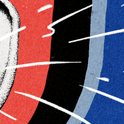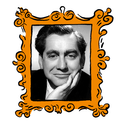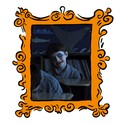Knausgaard’s latest book takes us back to his 1970s childhood in southern Norway ©ISTOCK
Boyhood Island (My Struggle: 3) by Karl Ove Knausgaard (Harvill Secker, £12.99)
Boyhood Island, by the Norwegian author Karl Ove Knausgaard, is an impressionistic “autobiographical novel,” the third in a six-part series, describing the life of the author, or at least the life of a putatively real person called Karl Ove Knausgaard. The first two books, published in English under the Proustian titles A Death in the Family and A Man in Love, are narrated by the adult “Knausgaard,” as he deals with the death of his father and the birth of his own children. He lives in Stockholm and, amazingly, has money to write. Yet he is illat- ease and argues constantly with his wife. He spends the days placating his children when really he wants to compose a great novel. He is trapped in shyness and finds it hard to speak the truth.
Boyhood Island takes us back to Knausgaard’s 1970s childhood. He lives with his parents and his older brother on a housing estate in southern Norway. His father has a vicious temper and Knausgaard is afraid of him. The adults are a ragged bunch of mostly middle-class hippies, imbued with vague notions of social reform but content to live affluent bourgeois lives. Knausgaard does well at school, kisses a girl, quests avidly for the admiration of his peers, throws a stone at a car, wonders if he is wearing the right kind of flared tracksuit bottoms and fails to discern a host of abject nuances that are evident to the adult reader.
This is the sort of quiet subjectivism that is normally doomed to go unread, or destined for a sketchy cult following at best. Where is the unique selling point? The competitive dispersal of trauma? Nothing happens! Over and over again! Yet Boyhood Island is being published in English by an imprint of Random House, one of the UK’s largest publishers, and on the cover we are told that Knausgaard is an “international literary sensation,” while review excerpts explain how “daring,” “maddening” and “powerful” his work is. Knausgaard has even been lampooned in the media, damned as a provocateur and renegade. It is like Georgio Morandi quietly painting his delicate still lives and then finding himself being denounced in the press as a national outrage, with everyone talking about that crazy artist, Morandi and his maddening pictures of bottles, bowls, how dare he? International notoriety ensues. But how? And why?
At one level, the answer is simple. In Norway the novels were published as Min Kamp I, Min Kamp II, Min Kamp III and so on, and the Hitlerian reference (as in Mein Kampf, My Struggle) annoyed everyone and was evidently provocative. Shortly after initial publication, Knausgaard’s relatives began appearing in the media to complain about the way they had been portrayed in his novels. A gruelling trade in meaningless binaries—fact versus fiction, truth versus invention, novel versus memoir—generated further media attention and further sales. Knausgaard was transformed from the well-respected author of two ambitious but uncommercial novels (1998’s Out of the World and 2004’s A Time to Every Purpose Under Heaven) into a bestselling pariah, first in Norway and then abroad. A seemingly perfect storm of publicity was created in which anything that was said about Min Kamp fed back into the project itself, whether it was said in fury, envy or mitigation.
Yet there is more to the case of Knausgaard than brutal hype. The Min Kamp books are unusually readable and convey an atmosphere of robust authenticity. They depict middle-class life in the west in the late 20th and early 21st centuries. They depict, in other words, the lives of many of Knausgaard’s readers. An audience that was starving on a diet of holy heritage novels, costume dramas and reiterations of ossified conventions, was apparently thrilled to read, instead, a recognisable portrait of their recent past and fleeting present—in all its beauty and absurdity.
There’s also something aspirational about the series, like a literary version of Friends. The adult “Knausgaard” has a nice flat, a talented poet wife, fine little children and distinguished friends who discourse reliably on culture. He is effortlessly erudite and tosses off mini-essays on Melville, Dante, Rembrandt, Hölderlin, Dostoevsky and Rousseau. He is charming and acutely sensitive to social nuance, and other characters tell us he’s handsome. But he’s not some stuck-up auteur: he is bawdy, uninhibited and describes himself shitting and puking and crying and being slapped in the face for admiring a woman’s arse.
Though the six-volume structure of Min Kamp is determinedly Proustian— Knausgaard also tells us how he “virtually imbibed” In Search of Lost Time—the style does not demand the focused attention of Proust. You don’t have to bind yourself in, word by word, lest you fall out of the web entirely. Knausgaard also echoes, at times, his Norwegian predecessors Knut Hamsun and Jens Bjørneboe. Yet he is never as domineering as Hamsun, and never as furious and overtly partisan as Bjørneboe. His style is more often redolent of the blog-email freeflow of the cyber age—the high-speed jettisoning of words. When the “Knausgaard”-narrator of Boyhood Island cries, he cries: “Oh oh oh oh oh oh oh oh oh oh oh oh oh oh oh oh.” When he is pleased, he exclaims: “Fantastic! Fantastic! Fantastic!” When he is embarrassed, he says: “Oh no, oh no. What should I do?” The translator, Don Bartlett, has done an extraordinary job in capturing Knausgaard’s colloquial-philosophical style in English. His achievement in channelling the tone of the original bears comparison with Robert Bly’s intuitive version of Hamsun’s novel Hunger, or Anthea Bell, Michael Hulse and Michael Hamburger’s translations of WG Sebald.
In Boyhood Island, Knausgaard adopts the consciousness of a child, mostly without qualifying interpellations. Knausgaard-fils is small, simple in his fears and pleasures. He loves “travelling in a car at night, with the dashboard lit, the muted voices from the front seats, the gleam of street lamps as we passed beneath.” He admires “sunbeams... on the forest floor like small, quivering creatures of light between the shadows of the branches.” He is afraid of stray noises in the night, of “ghosts and apparitions... the headless man and the grinning skeleton.” Through the thin walls of his suburban house, he hears his parents pissing and mumbling, clattering plates, preparing breakfast. He is comforted by his mother, terrified by his impatient, tyrannical father. The artfulness, the writerly craft, lies in the accumulation of detail:
On Saturdays we had cold rice pudding in the morning and a hot meal in the evening, usually a casserole, always in the dining room, and not in the kitchen where we normally ate. There was a serviette by each place. Mum and dad drank beer or wine with the food; we were given a soft drink. After eating, we watched TV... the Eurovision Song Contest... the FA Cup Final, the European Cup Final and Wimbledon.
Or:
I ate three smørbrød and drank the glass of milk. Cleaned my teeth in the bathroom, collected my satchel from my room, went downstairs and into the hot, narrow room with the two water cylinders. I stood absolutely still for two seconds... Then I donned my waterproofs, slipped on my satchel, went into the hall where my boots were, a pair of blue and white Viking rubber boots which I had been given despite my wanting white ones, shouted goodbye to dad and ran out...
Three smørbrød. Not two, not five. The boots which weren’t the white ones he wanted, the blue and white ones. Absolutely still for two seconds, not eight or 47. Such quasi-facts draws readers in, make them feel it is all true. Alienating poetic devices such as metaphor, which expose artifice, are used sparingly. When Chekhov, for example, describes the sky in the short story “Gusev,” he delivers three similes and a sardonic reference to Hamlet: “One cloud like a triumphal arch, another like a lion, a third like a pair of scissors.” When Knausgaard describes the sky in Boyhood Island, he is wilfully spartan: “The sky above the estate was almost completely blue now. The clouds towards the town, white. While on the other side... they were still heavy and grey.”
As with the previous Min Kamp books, there is no tangible physical danger. No one is oppressed by poverty, genocide, war, corruption or iniquitous governments. Events are not pegged to the grand narratives of history. Knausgaard wants to describe, to memorialise, the way things look from his own partial vantage point. Though the enterprise itself is not original, the results can be. And Boyhood Island (like the whole Min Kamp series, which is already completed in Norwegian) is leisurely, contemplative, beautiful, sometimes dull, inspiring, foolish, funny, sometimes extremely moving. The project also is the mirror opposite of the novel of Knausgaard’s that preceded the series, A Time for Every Purpose Under Heaven, which was lofty, biblical and allegorical.
A novelist can do whatever he wants, of course. And in Min Kamp Knausgaard dispenses with allusion and indirection and focuses instead on a kind of mesmeric realism. Whereas the dramatis personae in A Time for Every Purpose Under Heaven are biblical characters and angels, in Min Kamp the dramatis personae are himself, his wife, the people next door, his kids, his mum and dad. Is this why Knausgaard says, in interviews, that he has “sold his soul”? Or was it fury? Did he write “out of sheer rage,” as DH Lawrence once put it. You don’t want metaphysics, you capricious readers! Well then, I’ll give you yourselves! Blatant, obvious, ordinary life; no magic, no angels, just blog-style emissions of anything that comes to mind!
One can sympathise with the dilemma. In our supposedly scientific age, the work of imaginative fiction is sometimes seen as ropy and dubious, like someone lying or getting the facts wrong. What would have happened had Knausgaard called his protagonist Olaf Johanssen? Or Lazarus? Would Min Kamp have been noticed at all, had there been no “real life” controversy, no Hitlerian title, no angry relatives and no protestations of indecent self-exposure? We are left with a contradiction: on the one hand, Knausgaard’s virtuoso representations of the commonplace; on the other, the way his enterprise has been coarsened into a media scandal, literary reality TV.












